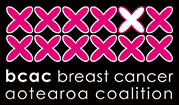Low vitamin D levels among women with breast cancer correlate with more aggressive tumors and poorer prognosis, according to a new University of Rochester Medical Center study highlighted at the American Society of Breast Surgeons meeting in Washington, D.C in May 2011.
The study is one of the first to examine vitamin D and breast cancer progression. Previous research has focused on vitamin D deficiency and the risk of cancer development. The URMC epidemiology study associates sub-optimal vitamin D levels with poor scores on every major biological marker that helps physicians predict a patient’s breast cancer outcome.
“The magnitude of the findings was quite surprising,” said lead researcher Luke J. Peppone, Ph.D., M.P.H., research assistant professor of Radiation Oncology at the URMC James P. Wilmot Cancer Center. “Based on these results, doctors should strongly consider monitoring vitamin D levels among breast cancer patients and correcting them as needed.”
Kristin Skinner, M.D.
Peppone and Senior Investigator Kristin Skinner, M.D., a URMC associate professor of Surgery and director of the Wilmot Comprehensive Breast Care Center, examined prognostic factors for 155 women who underwent surgery for breast cancer between January 2009 and September 2010. They also obtained blood tests that provided vitamin D status for all the patients within the one-year period before or after surgery.
Meanwhile, researchers collected relevant breast cancer data on each patient including age, race, menopause status, stage of cancer at diagnosis, estrogen and progesterone status, HER2 expression, gene expression, and Oncotype Dx score. The Oncotype is a newer diagnostic test for early-stage breast cancer that looks at a group of 21 genes within a woman’s tumor sample and issues a score between 0 and 100 that correlates with the likelihood of a recurrence. A higher risk of recurrence is usually reflected in scores greater than 30.
Finally, the results of the vitamin D tests were separated into two groups, optimal (greater than or equal to 32 ng/ml) and sub-optimal (less than 32 mg/ml).
A statistical analysis showed that cancers known to be more aggressive, such as triple-negative tumors (they do not express estrogen, progesterone, or HER2 human epidermal growth factor receptor 2), correlated with low vitamin D levels. Triple-negative cancers are often associated with younger women and minority women, and Peppone’s study also found that both premenopausal women and black women tended to have sub-optimal vitamin D levels, compared to older, Caucasian women.
In addition, a strong inverse correlation was found between decreasing vitamin D levels and increasing Oncotype scores. And finally, patients with invasive cancer, versus women with in-situ or stage 0 disease, also were more likely to have sub-optimal vitamin D levels.
A growing number of physicians are already monitoring cancer patients and healthy people for vitamin D. Last fall the Institute of Medicine announced new daily recommended intakes of vitamin D for nearly all adults and children in the United States and Canada. Although the IOM did not specifically address vitamin D and cancer, it reported that 600 IUs daily meets the needs of most people. Higher amounts are often prescribed to cancer patients; sometimes a weekly dose of 50,000 IU is necessary to treat severely deficient people.
Further research is needed to explore the biological basis of the relationship between D and tumor markers, but Peppone said his study highlights the importance of obtaining vitamin D levels in women diagnosed with breast cancer.
Source: University of Rochester Medical Centre press release, May 2011



